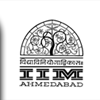|
- Definition:
The current ultramodern technologies are focusing on automation and miniaturization. The decreasing computing device size, increased connectivity and enhanced interaction with the physical world have characterized computing's history. Recently, the popularity of small computing devices, such as hand held computers and cell phones; rapidly flourishing internet group and the diminishing size and cost of sensors and especially transistors have accelerated these strengths. The emergence of small computing elements, with sporadic connectivity and increased interaction with the environment, provides enriched opportunities to reshape interactions between people and computers and spur ubiquitous computing researches.
Smart dust is tiny electronic devices designed to capture mountains of information about their surroundings while literally floating on air. Nowadays, sensors, computers and communicators are shrinking down to ridiculously small sizes. If all of these are packed into a single tiny device, it can open up new dimensions in the field of communications.
The idea behind 'smart dust' is to pack sophisticated sensors, tiny computers and wireless communicators in to a cubic-millimeter mote to form the basis of integrated, massively distributed sensor networks. They will be light enough to remain suspended in air for hours. As the motes drift on wind, they can monitor the environment for light, sound, temperature, chemical composition and a wide range of other information, and beam that data back to the base station, miles away.
MAJOR COMPONENTS AND REQUIREMENTS
Smart Dust requires both evolutionary and revolutionary advances in miniaturization, integration, and energy management. Designers can use microelectromechanical systems to build small sensors, optical communication components, and power supplies, whereas microelectronics provides increasing functionality in smaller areas, with lower energy consumption. The power system consists of a thick-film battery, a solar cell with a charge-integrating capacitor for periods of darkness, or both. Depending on its objective, the design integrates various sensors, including light, temperature, vibration, magnetic field, acoustic, and wind shear, onto the mote. An integrated circuit provides sensor-signal processing, communication, control, data storage, and energy management. A photodiode allows optical data reception. There are presently two transmission schemes: passive transmission using a corner-cube retro reflector, and active transmission using a laser diode and steerable mirrors.
The mote's minuscule size makes energy management a key component. The integrated circuit will contain sensor signal conditioning circuits, a temperature sensor, and A/D converter, microprocessor, SRAM, communications circuits, and power control circuits. The IC, together with the sensors, will operate from a power source integrated with the platform.The MEMS industry has major markets in automotive pressure sensors and accelerometers, medical sensors, and process control sensors. Recent advances in technology have put many of these sensor processes on exponentially decreasing size, power, and cost curves. In addition, variations of MEMS sensor technology are used to build micro motors.
WORKING OF SMART DUST
The smart dust mote is run by a microcontroller that not only determines the task performed by the mote, but consists of the power to the various components of the system to conserve energy. Periodically the micro controller gets a reading from one of the sensors, which measure one of a number of physical or chemical stimuli such as temperature, ambient light, vibration, acceleration, or air pressure, process the data, and store it in memory. It also turns on optical receiver to see if anyone is trying to communicate with it. This communication may include new programs or messages from other motes. In response to a message or upon its own initiative, the microcontroller will use the corner cube retro reflector or laser to transmit sensor data or a message to a base station or another mote.
The primary constraint in the design of the Smart Dust motes is volume, which in turn puts a severe constraint on energy since we do not have much room for batteries or large solar cells. Thus, the motes must operate efficiently and conserve energy whenever possible. Most of the time, the majority of the mote is powered off with only a clock and a few timers running. When a timer expires, it powers up a part of the mote to carry out a job, then powers off. A few of the timers control the sensors that measure one of a number of physical or chemical stimuli such as temperature, ambient light, vibration, acceleration, or air pressure. When one of these timers expires, it powers up the corresponding sensor, takes a sample, and converts it to a digital word. If the data is interesting, it may either be stored directly in the SRAM or the microcontroller is powered up to perform more complex operations with it. When this task is complete, everything is again powered down and the timer begins counting again.
|












